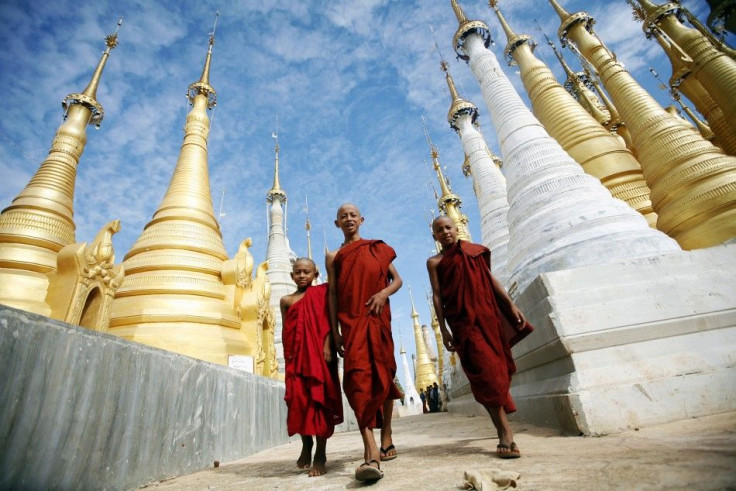Myanmar Could Quadruple Its Economy With Smart Reforms, But Only If The Government Acts Now

The Southeast Asian country of Myanmar is implementing serious reforms as it emerges from the shadow of 50 years of military rule. This is only the beginning of what is sure to be a long and arduous process of liberalization and democratization, but a new report from McKinsey & Company suggests that if Myanmar is to enjoy sustainable growth, the time for sweeping policy changes is now.
If the government doesn’t seize this chance, it is at risk of wasting incredible potential for growth.
“Managed well, Myanmar could conceivably quadruple the size of its economy, from $45 billion in 2010 to more than $200 billion in 2030 — creating upward of 10 million nonagricultural jobs in the process,” said the report, which points out four key areas that need a boost in the near future: technology, manufacturing, the facilitation of global trade and preparation for urbanization.
Myanmar has lagged behind its Asian counterparts in terms of growth -- its current GDP of about $52 billion makes up about 0.2 percent of continentwide production -- in part because cronyism and corruption have become so entrenched. Today, during an unprecedented period of political transition, economic opportunity is knocking. It won’t knock for long.
Myanmar faces monumental challenges, and no one is under the illusion that progress will be easy.
“It’s going to take some time for these sectors to thrive,” said Suzanne DiMaggio, vice president of global policy programs at the Asia Society. “There is no real functioning manufacturing sector to speak of today. The area of telecommunications is opening up as the government invites foreign companies to come in and invest, but that too will take time to take root in Myanmar because it didn’t exist previously.”
Myanmar, also known as Burma, has opened up considerably since a new civilian government was elected in 2010. President Thein Sein, who now sits in the capital city of Naypyidaw, has tolerated political opposition to an extent not seen for decades. Nevertheless, the country is still lagging in political freedoms and government transparency.
Things were even worse under the military junta; that era of brutal repression prompted the international community to impose heavy sanctions on Myanmar. Most of those restrictions were lifted in 2011 and 2012, and today the country is actively courting international investment.
In April 2012 the Burmese Central Bank helped things along by floating the national currency, setting an official rate of 818 kyat -- up from a measly 6.4 kyat -- against the American dollar. Myanmar also passed new foreign investment laws in November, which involved tax breaks and looser land-lease restrictions.
Those efforts have paid off; investors and donors alike are paying attention to this former pariah state. Just this Tuesday, the Coca-Cola Company (NYSE:KO) opened up a bottling factory in Myanmar; they also pledged a further $200 million in investments. Unilever PLC (LON:ULVR) started producing food products in the country this year, with additional pledges of about $650 million in investments over the next decade.
Assistance is rolling in, too. The Asian Development Bank has stepped up engagement in the country with loans of more than $530 million since last year. U.S. President Barack Obama has promised $170 million over the next two years to build a partnership with Naypyidaw. Japan has offered $500 million for concessional loans.
Myanmar’s potential for growth is abundantly clear. The country has a wealth of natural resources including oil, gas, minerals, timber, hydropower and coal. Its population of at 50 million sits right in the middle of Southeast Asia; it is perfectly positioned for access to emerging powerhouses China and India, as well as burgeoning markets like Indonesia and Bangladesh.
But the country’s current trade profile is woefully undiversified; it relies too heavily on mining and hydrocarbons. And even before other high-potential sectors can even begin to pick up steam, Myanmar will need to cultivate a workforce capable of sustaining it.
Right now, most Burmese eke out a living as small-scale farmers. At least a quarter of the population lives below the poverty line. The government’s first step will be to invest in the agricultural sector and help lift these families out of a decades-old cycle of destitution; only then can it proceed with the education and training necessary to ensure the profitability of more sophisticated industries.
The idea that Myanmar could quadruple its economy by 2030 -- which would require a GDP growth rate of 8 percent per year -- sounds far-fetched, but it’s has been done before. The McKinsey report notes that Indonesia was able to quadruple its own economy within 14 years. Thailand did the same in 13. China did it in 12. If Myanmar diversifies and invests wisely, it has potential to do the same.
“The transition in Myanmar is going to get messier before it gets better,” DiMaggio said, noting that land rights disputes, corruption and sectarian conflicts already present serious challenges. “But I agree with the McKinsey report; this is a very critical moment, and there will be many difficult choices. I think the next couple years could determine in large part how Myanmar’s development progresses over the long term.”
© Copyright IBTimes 2024. All rights reserved.






















